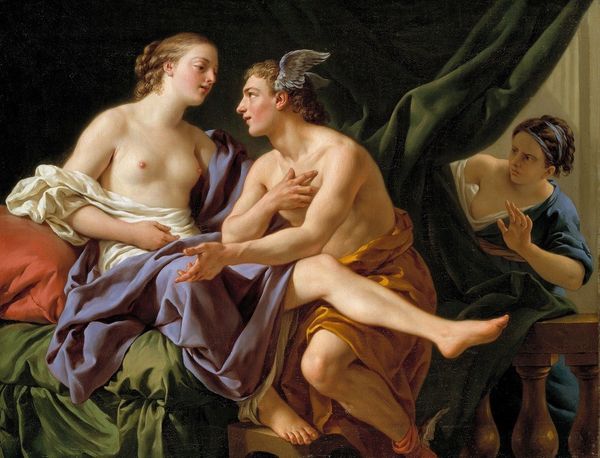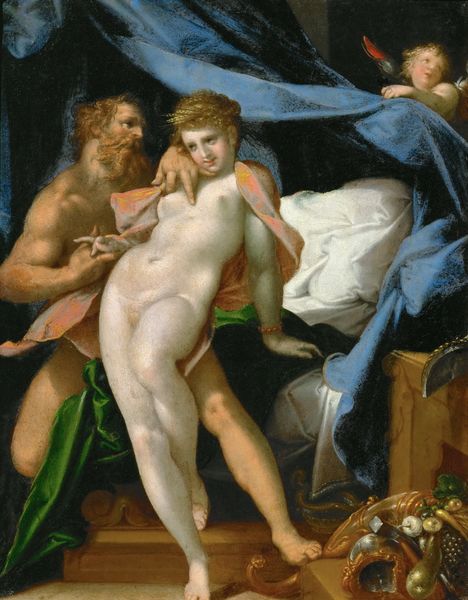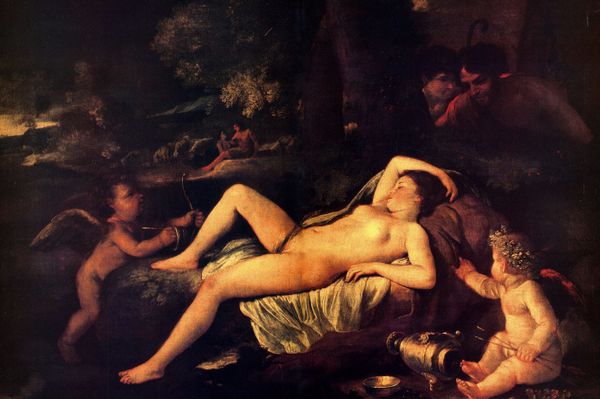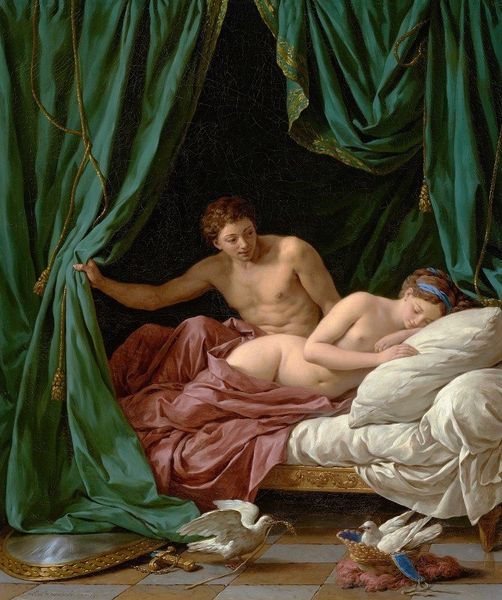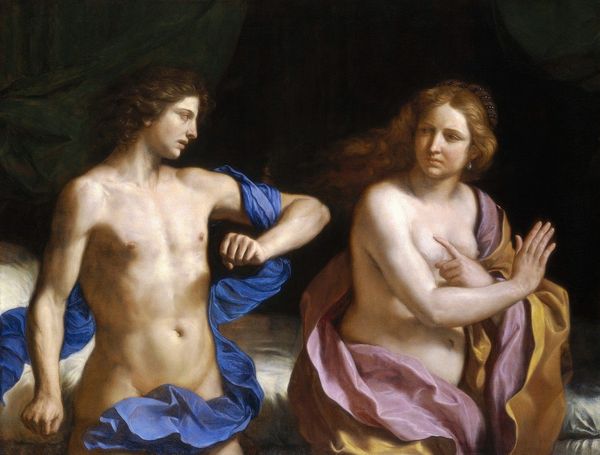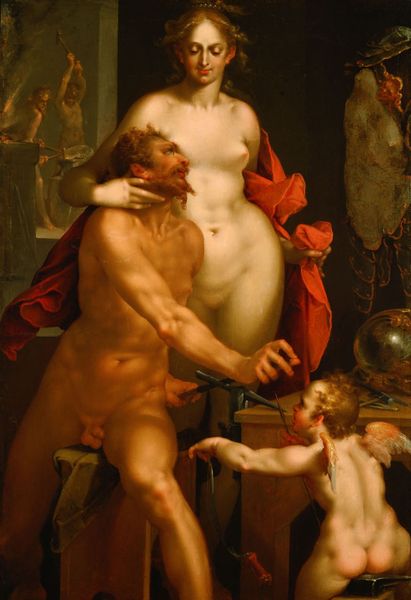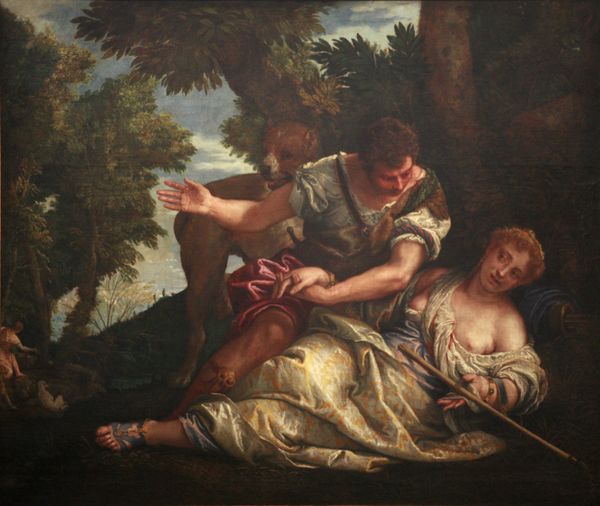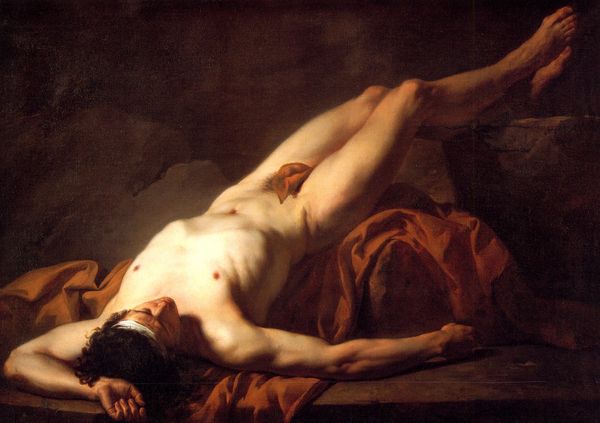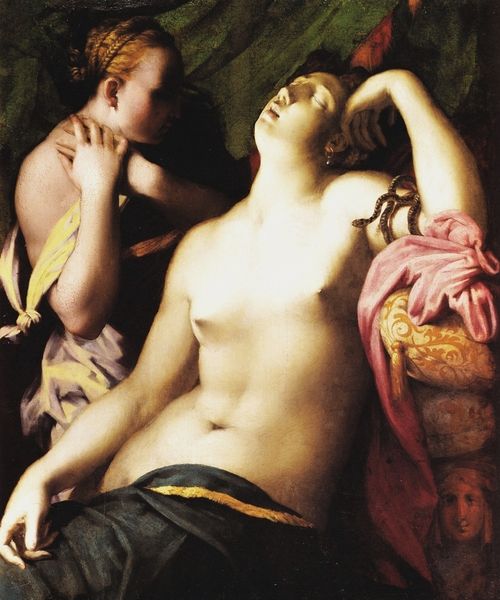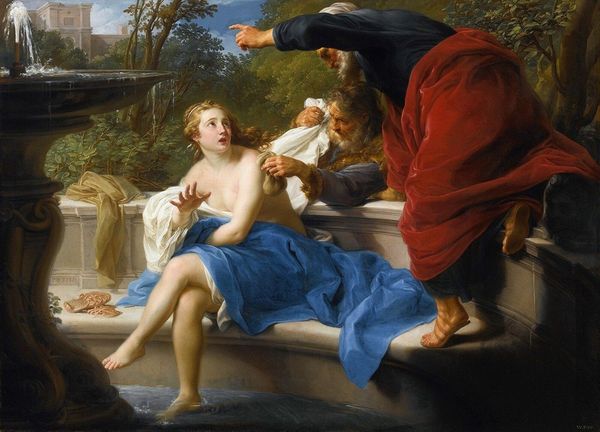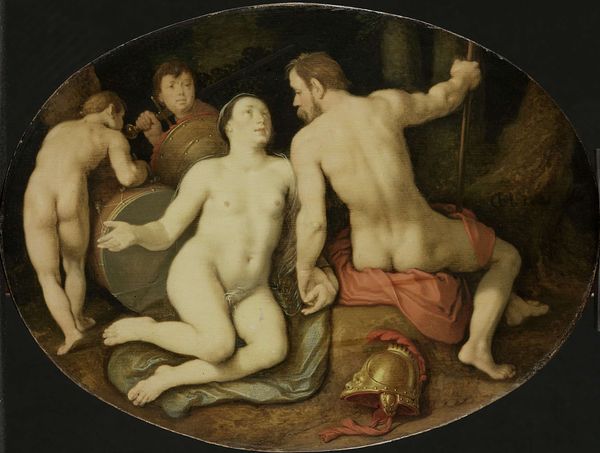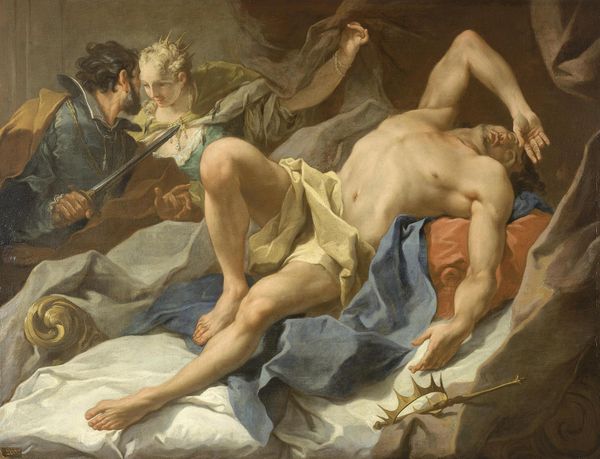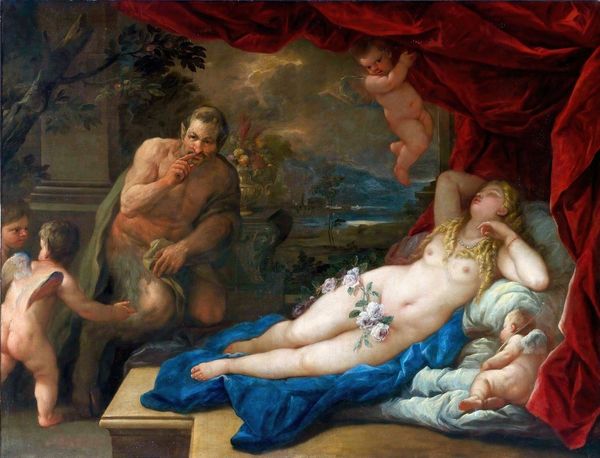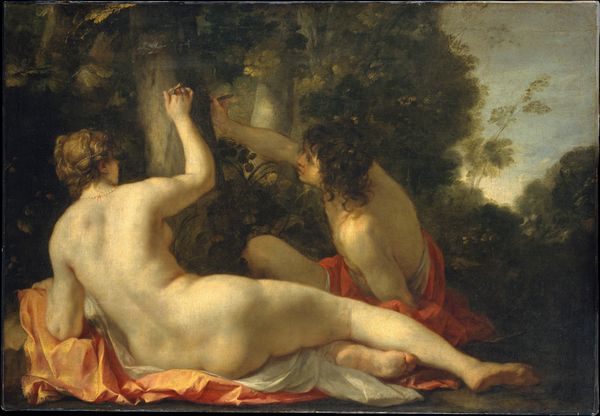
oil-paint
#
baroque
#
oil-paint
#
figuration
#
mythology
#
genre-painting
#
nude
Copyright: Public Domain: Artvee
Editor: Here we have Gerard van Honthorst's "Satyr and Nymph," painted in 1623 using oil on canvas. There's such a sense of playful exchange between the figures... the nymph looks almost mischievous. How do you interpret this work, thinking about its historical and cultural context? Curator: It’s interesting you pick up on the playful exchange. Paintings like this participated in a discourse, particularly in the early 17th century, about morality and pleasure. Think about where these paintings would have been displayed, often in the homes of wealthy merchants or even aristocratic collectors. This work seems to tread a fine line. Does it celebrate the sensual or caution against unchecked desires? Editor: That's a good point. It's not as straightforward as a simple depiction of mythological figures. Could this have been some form of political commentary, or even personal reflection of that time? Curator: Certainly! Think about the rising power of the merchant class in the Dutch Republic at this time. These paintings often mirrored the anxieties and aspirations of this group, a sort of negotiation with the pleasures of prosperity alongside religious reformations. What kind of message about public image might someone be attempting to broadcast? Editor: So the seemingly innocent scene of a Satyr and Nymph might actually be communicating complex messages about wealth, morality, and social standing... that makes me rethink my initial read of it. I didn’t realize how much weight these mythological portrayals held! Curator: Precisely. By understanding the social and cultural contexts in which the art was made and displayed, we get a richer understanding of the work itself. Editor: That's fascinating. I see how studying the context helps to unlock those layers of meaning and decode its original intended perception! Thank you!
Comments
rijksmuseum about 2 years ago
⋮
A laughing satyr leans forward over a nymph as he touches her face affectionately, while the nymph is tugging at his beard. Gerrit van Honthorst painted the two mythological figures in the foreground of the composition, drawing attention away from the woods in the background and the view receding into the distance.
Join the conversation
Join millions of artists and users on Artera today and experience the ultimate creative platform.
